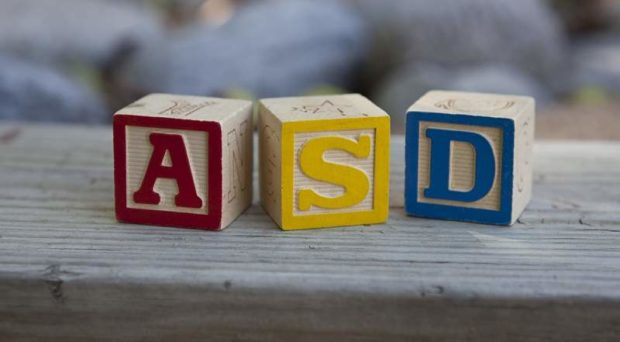
Autism spectrum disorder (ASD) is a challenging condition to define. Because ASD is diagnosed using observable behavior, subtle differences in the way children move or talk while interacting with other people will influence whether they are diagnosed with ASD.
To complicate matters, the way children interact with other people, and the way they are perceived by others, will be influenced by a plethora of factors that are not strictly part of the ASD diagnosis (e.g., age, sex, race, education, income, experience, social context).
Many in the field suspect that ASD is under-detected in girls.
Sex differences in the expression of ASD, in particular, are of increasing interest to scientists and treatment providers. Since boys are four to five times more likely to be diagnosed with ASD than girls, much of what is known about the condition is drawn from male-heavy samples that may bias the conceptualization of ASD. In fact, many in the field suspect that ASD is under-detected in girls.
Understanding similarities and differences in ASD across sexes will allow greater appreciation of how ASD manifests in all children, and will advance the goal of identifying causal mechanisms that inform more precise and personalized treatments.
Avoiding assessment biases
Objective measurement tools like 3D motion capture have the potential to circumvent potential biases in traditional assessment approaches. One recent study suggests that girls with ASD may consciously or unconsciously alter their hand and arm movements to look more typical while gesturing. This type of “masking” or “camouflaging” behavior could help girls with ASD blend in with peers that don’t have ASD, but it could also complicate efforts to identify the disorder and link girls with interventions that have been shown to improve long-term outcomes.
In our study, we explored a new kind of objective behavioral metric based on natural language. We asked whether some girls with ASD employ subtle gender-typical language patterns in ways that may serve as “camouflage” for their social communication difficulties.
Language is a window into the inner thoughts, feelings, interests, and fears of another person. Specific individual language patterns vary by speaker age, sex, racial/ethnic background, education level, current social context, and personality.
Some variations are extremely subtle. For example, speakers use words like “um” and “uh” to fill pauses that occur during normal conversation. Although “um” and “uh” are small words that may seem insignificant, they are used in surprisingly systematic ways across a variety of languages. For instance, “um” is used to signal a longer pause than “uh”, and women use “um” relatively more often than men, who use “uh” relatively more often than women.
How does this relate to the question of whether ASD is expressed differently in girls and boys? In recent years, some studies suggested that using “um” (rather than “uh”) to fill pauses is associated with less severe social impairment in children and teens with ASD. However, these studies did not consider population sex differences in patterns of filled pause use, and didn’t include enough female participants to analyze sex differences.
In our study, we analyzed filled pauses produced during 20-minute conversations between clinicians and children with ASD (49 boys and 16 girls matched on IQ and autism symptom severity, aged 6-17 years). Our results revealed that, consistent with prior research, boys with ASD produced fewer relative “um”s than typical peers. Importantly, however, the filled pause patterns of girls with ASD differed significantly from the patterns of boys with ASD, and were in fact comparable to typical girls.

What can we learn from these findings?
The results of behavioral research can be misleading when findings from male-heavy samples are generalized to all people. Although it is harder to test factors like sex or education level than it is to ignore them, our research adds to mounting evidence that these factors may be critical to understanding ASD. In this case, prior findings about “um” and “uh” were true for boys with ASD only, not girls.
The results of behavioral research can be misleading when findings from male-heavy samples are generalized to all people.
“Linguistic camouflage” may be a continuous construct, and is likely just one small component of a larger set of behavioral dimensions that could be subject to camouflaging. Future research is needed to determine whether the results of our study generalize to girls with more/less severe autism symptoms, adult women and men with ASD, people of different IQ levels, and to assess how camouflaging works in the real world.
Subtle motor problems have been proposed to underlie some social communication differences in ASD, and examining speech disfluencies might be one promising avenue for testing this hypothesis. From an oral-motor perspective, “um” and “uh” are different from one another. Little is known about how oral-motor integration might influence disfluency rates in ASD, and even less about how oral-motor factors might differ in girls and boys with ASD.
Finally, in addition to showing that prior findings on “um” were applicable to boys with ASD only, we identified a new potential marker of social impairment that is sex-neutral: All children with ASD were more likely to use “uh” if they had more severe ASD symptoms. Future research is needed to test the strength and generalizability of this new finding.
In summary, “camouflaged” behavior, combined with biases about how girls and boys should behave and true biological sex differences, likely complicate efforts to effectively identify and treat girls and boys with ASD. The findings of our study, wherein we identified one potential mode of “linguistic camouflage”, highlight the importance of continued commitment to tackling factors (like sex) that likely influence how ASD emerges and presents.
Please – as someone with Autism – Please could you call the condition its proper name – Autism Spectrum Condition – Not disorder. It’s not a disorder to us. It’s only a disorder to people who don’t understand it. It’s been called ASC since 2009 in the United Kingdom. Please respect all.